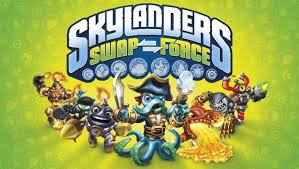 Richard thought that he found a great deal between a sale on a Nintendo 3DS game at Walmart and a promotion with the Toys ‘R’ Us credit card. The store employees stood in his way, not understanding the store’s price-match policy the way he did. He tried to convince corporate to intervene: no luck. No stacked discounts for him.
Richard thought that he found a great deal between a sale on a Nintendo 3DS game at Walmart and a promotion with the Toys ‘R’ Us credit card. The store employees stood in his way, not understanding the store’s price-match policy the way he did. He tried to convince corporate to intervene: no luck. No stacked discounts for him.
Here’s the deal that he was trying to make happen. “Skylanders: SWAP Force” normally costs $74.99, but Walmart had it on sale for $37, and Richard could prove it. Sweet deal. Then there was a 10% off discount for people with a Toys ‘R’ Us credit card, taking another $3.70 off the top. Then he noticed a buy one, get one 40% off promotion, which could get him a second game for 40% off. He found a $10 game that seemed to be worth about $6 and headed to the register.
I asked why the policy said that you could price match after applying TRU offers,” he wrote to Consumerist, “and all they would tell me is that it was one or the other, that I could not combine offers.”
Now, Richard had read the chain’s price-matching policy carefully. As far as he could tell, he should be able to get the game for the Walmart sale price, then apply Toys ‘R’ Us discounts to get another game for 40% off, then 10% off the whole total. That’s not how it works. The policy is to apply each store’s discounts, compare the two prices, and give the customer the lower of the two prices.
This dispute hinges on the meaning of this line in the Toys ‘R’ Us price-matching policy:
Prices are matched after deducting any Toys”R”Us and/or Babies”R”Us coupon savings and other offers from our price.
Richard understood this to mean that Toys ‘R’ Us would apply their discounts to the price along with matching the Walmart sale price. That reading of the text makes sense, but that’s not what Toys ‘R’ Us means. The policy says “from our price” – not from the matched price.
We know this because we sent Richard’s issue over to Toys ‘R’ Us for some clarification. “A customer cannot apply a Toys”R”Us discount on top of matching a competitor’s price,” explained a spokesperson. That means you can’t combine the Walmart price with the 10% off credit card discount, or with the buy one, get one 40% off deal. Customers can have one discount or the other, but not both.
So that settles it. Or does it? While we were talking to Toys ‘R’ Us, Richard reported back that he spoke to a corporate employee and to the store manager about his dispute. “[The corporate employee], after we spoke, confirmed that the store should had honored both offers, as per the terms of their price match policy,” Richard explained to us. When the employee offered to send his complaint on and have someone from the store’s district management contact Richard, he agreed.
The next day, the manager called him up, explaining that the real policy is exactly what the media relations person told us and the store staff had told him when he tried to combine discounts. The policy doesn’t say what he thinks it does.
Who’s right here? The store’s message is pretty consistent, unless you read the policy the way that Richard did. They apply discounts and then compare the two prices. Maybe the corporate employee was going rogue and a fellow lover of discount games…or maybe the store has a secret hatred of price-matchers.

